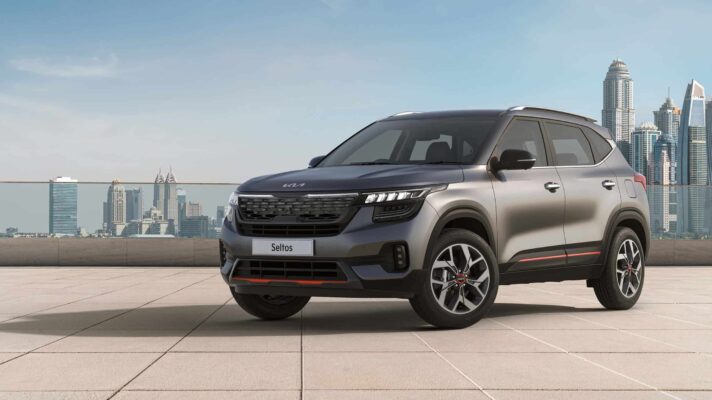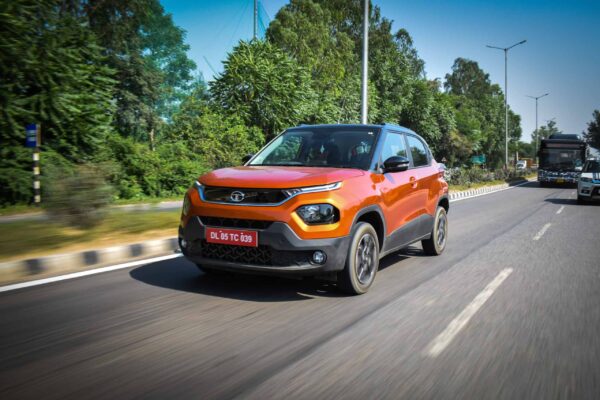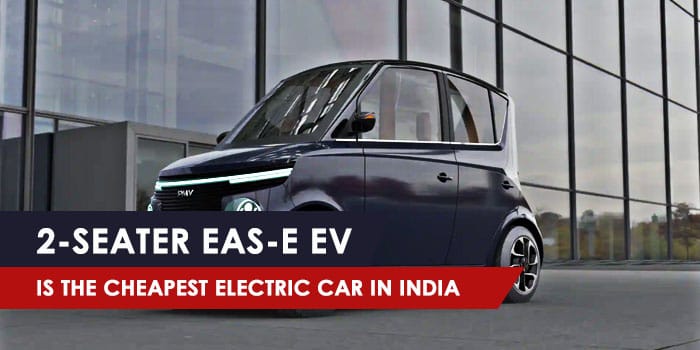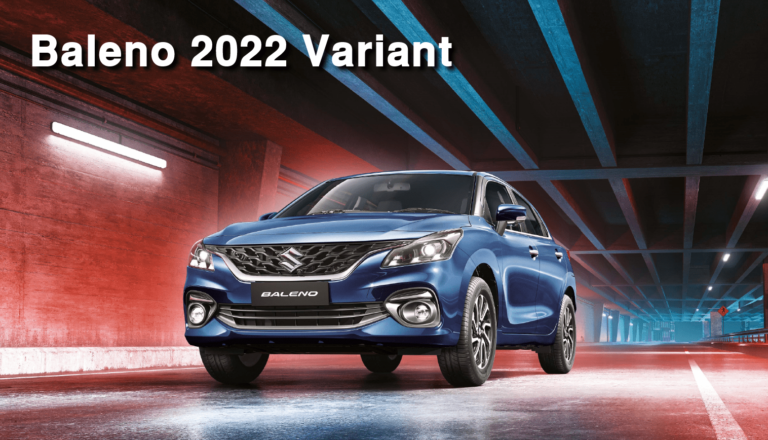
The Wright Brothers are credited with building and flying the first aeroplane in 1903. Since then, there have been numerous attempts at building and flying aircraft. At the same time, there have been engineers who had the dream of a flying car. A flying car can be driven on ordinary roads just like other motor vehicles and can also transform into an aircraft that can sustain flight. Flying cars in India have been spearheaded by a company called Vinata Aeromobility in 2021 with a flying car that is no larger than a Maruti Ciaz.
Indian company unveils the first flying cars in India
The latest in flying car news in India is about a company called Vinata Aeromobility, which is developing a flying car that can accommodate 2 passengers and is expected to be available by 2023. The Chennai based start-up unveiled the flying car prototype at an aero exhibition in London.
The flying car features upright doors and a huge digital touchscreen that is used for navigation and flight controls.
It is a hybrid flying car that is classified as a VTOL (Vertical Take-Off and Landing). Engine thrust is provided by a co-axial quadrotor.
The flying car weighs in at 1100 kg and will use bio-fuel + electricity for sustainable usage. The top airspeed is 120 km/h at an altitude of 3000 feet. The flying vehicle can remain airborne for up to 60 minutes. Vinata Aeromobility expects this flying car to become a reality by 2023 for transporting passengers, cargo and for medical emergency services.
Also read What Are The Different Fuel Types Used In Cars In India
Flying cars advantages
The main potential of flying cars is their ability to drive on road and fly in the air. A vehicle that has 2 modes of transport can be very beneficial to the driver and the motoring/aerospace world in general.
Here are some of the pros of flying cars of the future.
Less traffic pollution
Cities are congested with bumper-to-bumper traffic, full of vehicles that are spewing out exhaust fumes that contain high amounts of carbon monoxide, carbon dioxide, nitrous oxides, hydrocarbons, sulphur dioxide, and tiny particles of carbon soot that linger in the air and lead to a host of health problems.
Roads have been built in the previous decades and are not capable of handling the large number of vehicles that are plying today. Other than a small number of electric vehicles that are non-polluting, most cars burn fossil fuels and produce tons of pollution in our environment.
Electric vehicles and flying cars have the potential to reduce this pollution and have a positive effect on the environment. With every flying car, you will be taking a road car off the grid, thereby saving on pollution for the lifetime of that vehicle.
Also read What is an emission control system
Flying cars produce less pollution than road cars
Studies have shown that electric flying cars produce 52% less greenhouse gas emissions than regular petrol/diesel-powered cars. This is assuming a 100 km journey with 4 passengers.
Since flying cars of the future will be piloted by certified pilots, they are more likely to be occupied by passengers sharing lifts rather than a regular road-going car that often only has the driver in the car.
Also read Difference Between Petrol And Diesel Engine Explained
Flying cars travel shorter distances and have better fuel economy
Flying cars are more efficient and have lower emissions. A flight takes the shortest distance between two points which equates to less fuel being used and a shorter journey. A road trip will take lots of twists and turns, stop at traffic lights and get through traffic which will end up consuming more fuel and a long journey time.
Also read Reasons Why Your Vehicle Could Fail an Emissions Test
More road space for motorists and pedestrians
With more and more flying cars taking to the skies, there will be more road space for motorists, pedestrians and cyclists.
With a large space available, roads can be turned into bicycle lanes and walking paths for pedestrians. Cities will be transformed into clean and green environments that foster healthy living.
Also read How To Maintain Your Motorcycle
Minimum infrastructure for ground vehicles
Today’s cities are built around a network of roads and are designed to allow free flow of traffic with highways, bridges, flyovers and underpasses.
There are also large road networks that connect two different cities which often is built through a natural reserve and require the cutting down of trees or the clearing of the natural landscape. These connecting roads destroy wildlife habitats and disrupt nature.
Flying cars require infrastructure just for taking off and landing and will not require further ground infrastructure.
Also read Flex Fuel Engines: Explained With Working And Benefits
Conclusion
For well over a century, we have imagined a future where flying cars would be the primary mode of transport. We have seen numerous concepts from manufacturers and fully functioning prototypes that have taken to the skies.
Aircraft technology is available today and can power a flying car, but these vehicles are not yet ready for mass production.
Road cars and aircraft have an opposite set of requirements. While aircraft are lightweight, narrow and have large wings to generate lift, road cars are heavy and wide and are equipped with wheels and other components that will add to drag force in the air.
A flying car will have to be built with a delicate balance between the two requirements. The closest we have got to a viable flying car is from the Slovakian company AeroMobil which took 30 years to make it from the drawing board to reality.
We hope you found this article on flying cars interesting. You might also want to have a look at some of our other articles on top automatic bikes in India and an encyclopaedia about Formula 1 engine technology.
Frequently Asked Question
Q1. Are flying cars real?
Ans. Flying cars are real and will soon be part of our everyday reality. One such flying car is the AirCar which has been certified for flight and has flown for 70 hours. It has folding wings and can take off just like any other light aircraft. It is an electric vehicle that looks similar to other road-going cars, but when it unfolds its wings, it works just like an aeroplane. It has a rear-mounted propeller that provides the necessary thrust to maintain flight in the air.
The AirCar can fly at 186 mph and at an altitude of 3200 feet. It is equally capable of driving down roads and taking to the skies. The car is manufactured by a company called Klein Vision and is powered by a BMW engine, which seems fitting because BMW used to make aeroplane engines in the past. In fact, the BMW logo is actually a spinning propeller.
The AirCar is said to have 1,000 km of range using its 140 bhp, 1.6-litre, four-cylinder BMW engine with a propeller and a parachute. This car is considered the future of transportation for city commuting and inter-city travel that alleviates the struggle of being stuck in congested traffic.
Q2. Who invented flying cars?
Ans. The Curtiss Autoplane from 1917 is considered the first flying car. The Autoplane was made from aluminium and was equipped with three wings spanning 40 feet. The car’s engine was used to drive a propeller fixed at the rear of the car. It could not stay in the air for long, but it is considered the first of its kind.
In the modern age, the first true flying car is the AeroMobil. It has a set of sleek wings, and an aerodynamic exterior or fuselage, and the interior is ultra-luxurious and filled with gadgets. It can be considered the flying car of the future.
The AeroMobile is a unique flying car that has a research and development team collaborating with Mercedes Benz F-1, Ferrari F-1, McLaren, Aston Martin and BMW. These companies provide input for the road part of the car. For all the aerospace technology, AeroMobile has teamed up with the likes of Lockheed Martin, Airbus, Rolls Royce and Diamond Aircraft.
The AeroMobile can switch from a road-going car to a flying car in less than three minutes. It is destined to be the forerunner and archetype of flying cars in the future.
Q3. When will flying cars be invented?
Ans. At present, aerospace companies like Boeing and Airbus are working on flying car models that will reshape the way we look at transport. Various official reports state that we should be witnessing the launch of around 20 flying car models in the years 2022 and 2023. All across the globe, there are several companies engaged in the concept of flying cars or VTOL (Vertical Take-off and Landing) vehicles and such prototypes built like large drones. The companies are hopeful of having fully functional flying cars by the year 2030.
Q4. When flying cars will be available?
Ans. Flying cars have been part of movie scripts right from the 1970s. They imagined flying cars to be a reality in the 21st Century but we are yet to see flying cars at our local dealerships. However, there are various companies that are involved in the conceptualisation and construction of flying cars. A company in Slovakia called Klein Vision is working on the AirCar which is well on its way to making it into production. We should see flying cars available to the public as early as 2023.
Q5. How flying cars work?
Ans. Like an aircraft, the flying car will have a fixed wing, propeller or engine that provides thrust. Flying cars may also be equipped with a helicopter rotor for VTOL capability. Power has traditionally been provided by an internal combustion engine burning fossil fuels, but electric propulsion is undergoing rapid development in the field of flying cars.
Q6. How many flying cars are in the world?
Ans. As of 2022, there are about 10 flying car companies that are in the process of building flying cars. Some of them include the PAL-V Liberty, AeroMobil 3.0, Terrafugia Transition, Blackfly, Moller Skycar, CarPlane, Samsung Switchblade and Ehang 184. There are many more concepts of flying cars that are yet to be put into production.
Q7. Will flying cars ever be a thing?
Ans. Flying cars should be commercially available by 2024, however regulations for managing flying cars and air traffic will be a concern for authorities. It is definitely a viable concept and many flying cars have been successfully tested. Road cars and aircraft are built very differently, so a flying car will have to be a compromise between the two.
Q8. When are flying cars coming out?
Ans. Flying cars are coming out sooner than we expected. Flying cars technology has advanced quite a bit in the past few years. A few flying cars have been tested and could be available to the public by 2023 -2024.
Q9. Will flying cars be possible?
Ans. The fact that flying cars will have to use a runway to take off and land will reduce their appeal and restrict their use to areas that have an airport. Also, becoming a private pilot takes months and is costly, so the steps involved in developing, testing and implementing such a program will take years.
Q10. Why flying cars are a bad idea?
Ans. Flying cars have certain hurdles they must overcome such as lack of infrastructure, advanced technology and air traffic regulations. Flying cars need a place to land so they most likely will have to use an airport as a landing strip, due to crowded cities.
Q11. Are flying cars legal?
Ans. Flying cars are real and could be the new way we commute, work and live in the future. Advances in technology such as propulsion methods, aerodynamics, electronics and batteries can directly be applied to future flying cars.
Q12. Will flying cars ever exist?
Ans. Uber (the ride-sharing company) has an aerial flying car called the Uber Elevate which has been acquired by Bell Nexus and Joby Aviation. They have a concept that uses an all-electric powertrain, a VTOL air taxi that is set to debut in 2023. It is very likely that flying cars will exist in the future.
Q13. How much will flying cars cost?
Ans. The starting price for the PAL-V Liberty is Rs.2.6 Crore. Other flying cars will be in this price range which is keeping them out of the hands of the common man right now.
Q14. 6 flying cars that will change the world?
Ans. The future of flying cars will most likely be realized with vehicles such as the AeroMobil 3.0, PAL-V Flying Car, Maverick Flying Car, The Transition, AeroMobil 4.0 and the Terrafugia TF-X.








